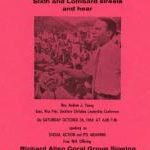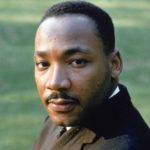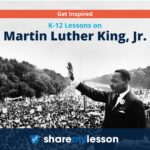Education was integral to Dr. King’s vision for a more just society, and working to ensure that dream comes true is integral to America’s educators today. Share the influential ideas of this towering figure of the civil rights movement who envisioned racial, economic and social justice for America by espousing non-violent, collective action that would change society forever. Share My Lesson’s updated collection features curated lesson plans, resources and activities to help your prek-12 students explore Dr. King’s commitment to the labor movement and the fight for justice and dignity.
Women & the American Story: A Nation Divided, 1832-1877
This free curriculum unit from the New-York Historical Society delves into the ways women participated in all aspects of the Civil War and on both sides of the conflict, from the early debate over the expansion of slavery through the end of federal Reconstruction. Materials examine this pivotal moment in American history through the experiences of diverse women and consider how the war and then Reconstruction policies shaped their lives.
Black History Month Lesson Plans on Nonviolence
The power of nonviolent actions and attitudes as a means to resist oppression and spur reforms is a recurring feature of democratic and democratizing societies. The School Violence Prevention Demonstration Program presents educators with lesson plans that explore the use of nonviolence in history, paying particular attention to the civil rights movement and African American history. Six lessons address: the 1963 Children’s March; the concept of nonviolence using primary sources and stories of participants in the civil rights movement; the power of nonviolence; the story of Rosa Parks; citizenship schools; how music can be used to achieve social and political change.
What Does It Mean to Be a Good Citizen?
This is the first lesson in Khan Academy’s new high school civics course. This lesson focuses on what it means to be a good citizen, what civil society is, and what are democratic principles and civic virtues.
George Washington’s Rules of Civility in the Age of COVID-19
In 1745, a young George Washington copied down a set of rules in his workbook. His aim was to learn how to properly conduct himself in society. He took his examples from the writings of a 16th-century Jesuit priest. The rules Washington recorded still resonate today as we learn how to navigate the health crisis the world is now facing while trying to maintain civil behavior.
Landmark Lessons
Find lesson plans generated by teachers who completed the Cultures of Independence workshop at the Historical Society of Pennsylvania. The lessons illustrate how local and national history can be taught through a focus on a physical place and primary sources. Criteria for selecting lessons also included the teaching of historiography and, when appropriate, connections to the founding principles of the United States. Use a lesson from your region, or become inspired to create your own.
Women & the American Story: Growth and Turmoil, 1948-1976
This free curriculum unit from the New-York Historical Society explores the decades following World War II and considers the action that different groups took to advocate for their rights. Materials examine how shifting political and social ideologies impacted women’s lives and the roles women played in the wide array of activist-led movements that formed in the 1960s and 1970s.
Civil Rights in Pennsylvania

Throughout the twentieth century, blacks in Pennsylvania employed numerous strategies to achieve the civil rights they deserved. Their efforts for to receive their rights began with a strategy of New Deal liberalism in the 1940s and 50s headed by prominent black leaders. When attempts to rewrite the laws using the established political system failed, black leaders encouraged more direct action, like boycotts and sit-ins. The movement quickly took on a black nationalist approach. Philadelphia became the perfect place for several Black Power conferences and home of the short-lived, though active, Black Panther Party.
Second Amendment: D.C. v. Heller and McDonald v. Chicago
The film “Second Amendment: D.C. v. Heller and McDonald v. Chicago” examines the history of guns and gun ownership in our society from the Revolutionary War to modern times and the complicated debate over what the founders intended when they wrote the Second Amendment. Does it protect a right of individuals to keep and bear arms? Or is it a right that can be exercised only through militia organizations like the National Guard?
Martin Luther King, Jr. and Nonviolent Resistance

By examining King’s famous “Letter from a Birmingham Jail” in defense of nonviolent protest, along with two significant criticisms of his direct action campaign, this lesson will help students assess various alternatives for securing civil rights for black Americans in a self-governing society. (Duration: 3 class periods)
